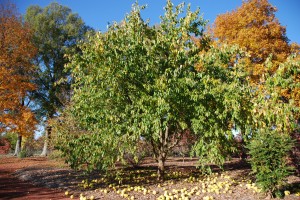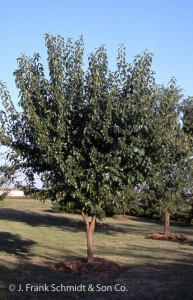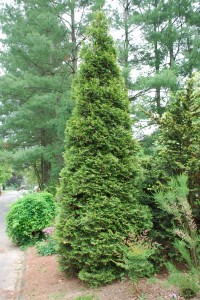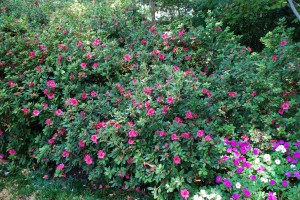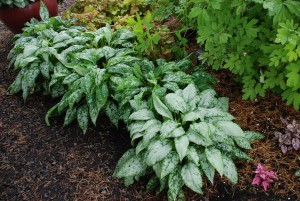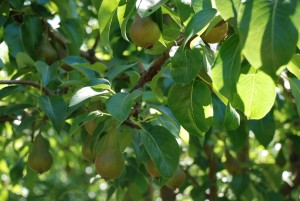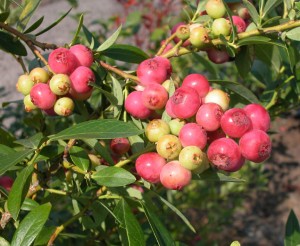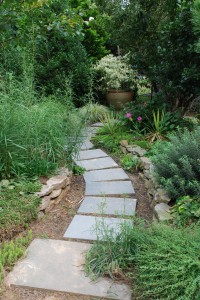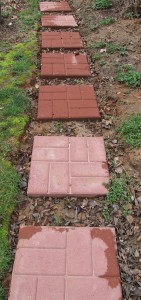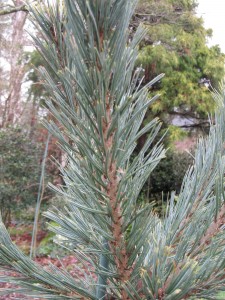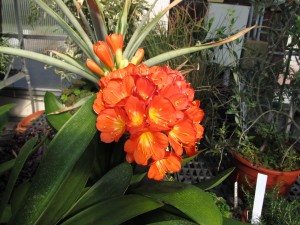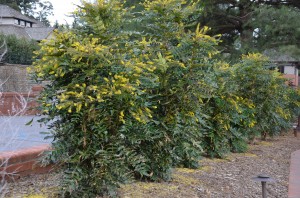Osage orange (Maclura pomifera) has been declawed and neutered. Also called Bois D’Arc (pronounced “bow-dark”) by native Americans, this tough native prairie tree species (USDA Zones 5-8) produces large 4-6 inch diameter yellowish green fruits (“hedge apples”) which may weigh 2 to 3 pounds. They fall from the tree in October to create a maintenance nightmare. Its fierce ½- inch long thorns, hidden among the thick branches, can snag clothing or puncture a car tire.
‘White Shield’ thornless cultivar (M. pomifera var. inermis) has arrived. It is a handsome medium-sized landscape tree, averaging 35 feet in height and spread. It can be utilized as a specimen shade tree or as a deciduous windbreak.
Osage orange is fast growing at 2 ½ to 3 feet per year. Its wood is hard and does not easily split. Mature tree bark is deeply fissured, with an orange-brown inner wood peeking through. Pruning helps in the early years to develop a well-branched tree.
Summer foliage is dark green and glossy. Yellow-green fall foliage color may vary widely from tree to tree, sometimes brightly golden. In late spring fruitless White Shield bears tiny green flower clusters that are mostly inconspicuous.
Few trees prosper better in poor infertile, acid or alkaline pH soil, dry or wet ground. Summer foliage is impervious to urban air pollutants. Overall, disease and pest problems are rarely an issue.
White Shield is ideally suited for large residential or commercial properties, municipal parks, and golf courses.

